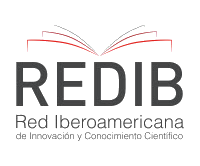EMI Strategy to English Foreign Language Inclusion in the Learning Spaces for a Science Program in Natural Sciences and Environmental Education
##plugins.themes.bootstrap3.article.main##
The inclusion of a foreign language English in the subjects of professional academic programs constitutes a challenge for most teachers, which is worth taking on since its effectiveness in improving students' communicative skills has been demonstrated. To fulfill this purpose, this research assumes English as the medium of instruction (EMI) approach with students of the Bachelor's degree program in Natural Sciences and Environmental Education. Evaluative-descriptive qualitative research was conducted with a convenience sample of three volunteer teachers and 67 students participating in the activities. The techniques and instruments used were the documentary analysis of the didactic sequences designed and a virtual survey to identify the perception of teachers and students regarding the research categories. For the inclusion of the English language in the subjects, the researcher and a teacher from the language area supported the volunteer teacher. The didactic sequences were designed according to the content of the class through the formulation of cognitive, procedural, and attitudinal competencies of low and high cognitive demand, these sequences allowed putting into practice the receptive communicative skills of the English language: reading and listening. The survey revealed a positive overall assessment, which offers certainty regarding each of its components, making it possible to generate a methodological route for replicating the process.
Downloads
##plugins.themes.bootstrap3.article.details##
Bausela, E. (2003). Metodología de la Investigación Evaluativa: Modelo CIPP. Revista complutense de educación. https://www.researchgate.net/publica-tion/39287321_Metodologia_de_la_Investigacion_Evaluativa_Modelo_CIPP1
Beelen, J. (2011). La internacionalització a casa en una perspectiva global: un estudi crític de l'Informe del 3r. Estudi Global de l'AIU». RUSC, Universities & Knowledge Society. 8 (2). https://raco.cat/index.php/RUSC/article/view/254142
Blanco, M. C. (2016). Aprendizaje en Ingles CLIL y EMI. Propuesta de unidad didáctica. Telecomunicación Campus Sur Politécnica. [Tesis de grado]. https://oa.upm.es/44439/
Bocagrande, H. (2006). Globalización y Política Pública en Colombia. Diálogo de Saberes, 24: 35-38. https://revistas.unilibre.edu.co/in-dex.php/dialogos/article/view/4306
Chen H, Han J, Wright D. (2020) An Investigation of Lecturers' Teaching through English Medium of Instruction-A Case of Higher Education in China. Sustainability. 12(10). https://doi.org/10.3390/su12104046
Consejo Nacional de Educación Superior (2020). Acuerdo CESU 02 del 2020, Capítulo I, Artículo 2, Referentes conceptuales. https://www.cna.gov.co/1779/articles-402848_documento.pdf
Figueroa, C. M. (1997). El análisis del discurso en el aula de inglés. Adquisición y aprendizaje de lenguas segundas y sus literaturas. 151-156. Santiago de Compostela: Minerva Repositorio Institucional Da USC. https://dialnet.unirioja.es/servlet/articulo?codigo=1234255
Hernández, A. (2017). Saber, saber hacer, saber ser docente. Revista de Investigación en Didáctica de las Ciencias Sociales (1). pp. 54-70. https://dehesa.unex.es/handle/10662/6612
Instituto para la Investigación Educativa y el desarrollo pedagógico IDEP. (2015). Rutas pedagógicas en la enseñanza de la historia. Bogotá.
Lozano, J. R. (2013). Internacionalización del currículo de los programas académicos universitarios, (p. 6). Armenia. https://www.unilibre.edu.co/bogota/pdfs/2016/3sin/B31.pdf
Macaro, E. (2018). English medium of instruction-A case of higher education in China. Sustainability, 12(10), 4046. https://doi.org/10.3390/su12104046
Masapanta, S., y Velázquez, Á. (2017). Primeros pasos para una mejora en el uso de la taxonomía. Revista Iberoamericana de Informática Educativa, 12. https://dialnet.unirioja.es/servlet/articulo?codigo=6231880
Ministerio de Educación Nacional (2014). Colombia very well: Programa nacional de inglés 2015-2025. Documento de socialización. Bogotá: MEN. https://www.mineducacion.gov.co/1759/articles-343837_Programa_Nacional_Ingles.pdf
Ospina, A., y Lara, M. A. (2009). Rutas Pedagógicas, un camino para el desarrollo de competencias. Bogotá: Serie Innovación IDEP. https://repositorio.idep.edu.co/bitstream/handle/001/2141/Premio_Investigacion_Innovacion_2012_p_61-76.pdf?sequence=1
Pilleux, M. (2001). Competencia comunicativa y análisis del discurso. Estudios Filológicos, 36, pp. 143-152. https://scielo.conicyt.cl/scielo.php?pid=S0071-17132001003600010&script=sci_arttext https://doi.org/10.4067/S0071-17132001003600010
Pozo, M. Á. (2013). Formación del profesorado universitario para la docencia en inglés. REDU. Revista de Docencia Universitaria. 11(3):197-208. https://doi.org/10.4995/redu.2013.5526 https://doi.org/10.4995/redu.2013.5526
Turhana, B., y Kırkgöz, Y. (2018). Motivation of engineering students and lecturers toward English medium instruction in Turkey. Journal of Language and Linguistic Studies, 261-277. https://dergipark.org.tr/en/pub/jlls/issue/43213/527891
Universidad Libre (2014). Proyecto Educativo Institucional Acuerdo N°04, (pp. 40-41). Bogotá. https://www.unilibre.edu.co/images/pdf/pei22oct14.pdf
Universidad Libre Seccional Socorro. (2018). Generalidades. Plan de Regionalización Socorro. Socorro, Santander, Colombia.
Vila, R. R. (2020). La docencia en la Enseñanza Superior. Nuevas aportaciones desde la investigación e innovación educativas. Barcelona: Octaedro, 2020. ISBN 978-84-18348-11-2, 1420 p. http://hdl.handle.net/10045/110076
Yip, D. Y., Coyle, D., y Tsang, W. K. (2007). Evaluation of the effects of the medium of instruction on science learning of Hong Kong secondary students: Instructional activities in science lessons. Education Journal, 35(2), 77-107. https://citeseerx.ist.psu.edu/viewdoc/download?doi=10.1.1.453.9333&rep=rep1&type=pdf














